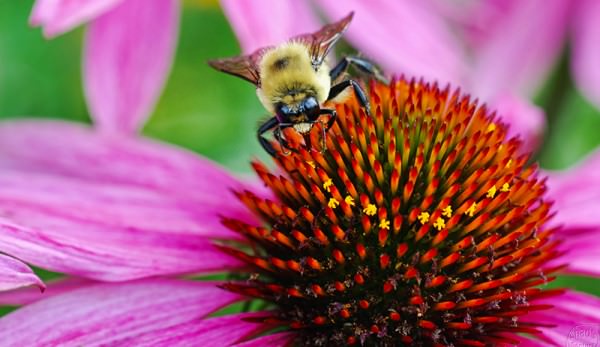
North America is home to some 4,000 different species of native bees. Like Honey bees, they too are fast becoming victims of pesticide exposure, diseases and habitat loss, but because most native bees live solitary lives, they aren’t succumbing to colony collapse disorder. We farmers play a huge role in supporting the many species of native bees that live right outside our front doors. If you aren’t sure why you should help protect them, check out the reasons below.
1. Native bees give us food.
These little creatures pollinate upwards of $3 billion in crops each year, a number that could rise if we all start promoting and preserving these amazing insects.
“Native bees are especially important for small farmers because they are probably playing a more significant role on smaller farms,” says Mace Vaughan, pollination program director for The Xerces Society for Invertebrate Conservation. “At Rutgers University, they found that on larger farms, native bees are providing at least 25 percent of all pollination services. Small farmers often have more habitats for these insects and so they are probably getting even better rates of pollination than that.”
2. And they’re fantastic at their job!
Native bees are more efficient pollinators than Honey bees: 250 female orchard mason bees (Osmia lignaria) can pollinate 1 acre of apple trees, a task that requires 15,000 to 20,000 European Honey bees. And unlike Honey bees, most species of native bees are active in cold and wet conditions with broader foraging habits.
3. They won’t break your heart—or sting you.
“It’s important for people to realize that these native bees are all over the place,” Vaughan says. “Most are very docile and gentle and don’t sting.”
4. They’re nature’s celebrities.
Did we mention how fabulous native bees are? “[Native bees] are a very diverse crew—with names like mining, digger, sunflower, mason, leafcutter, carpenter and squash bees—and many are very nondescript, but some are just gorgeous,” Vaughan says. “They shine like iridescent green jewels or have bright stripes. It is stunning to find out how many bees are out there.”
He describes a cranberry-farming friend who takes his beer outside at night and sits on a lawn chair to watch the native bees when the cranberries are in full bloom.
“Before he started working with us, he never noticed them before. Now, when he watches the many native bees buzzing around his cranberry fields, he says, ‘You go, girl! Go make me some money!’ Native bees provide a very critical service; you just have to learn to recognize and nurture it.”
We’re sure you can add many more reasons why you love native bees. Tell us in a comment below!
This article originally appeared as part of “Pollinator Central” in the July/August 2013 issue of Hobby Farms.




